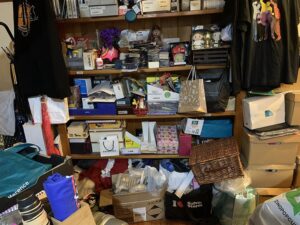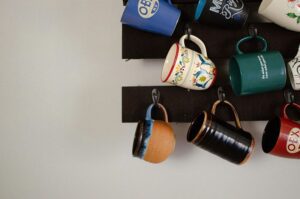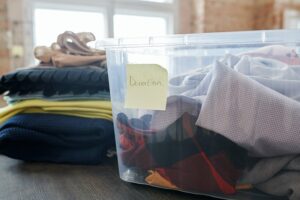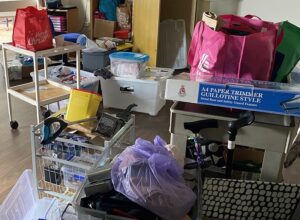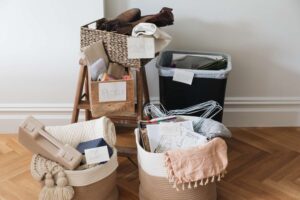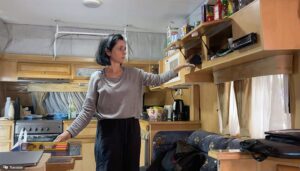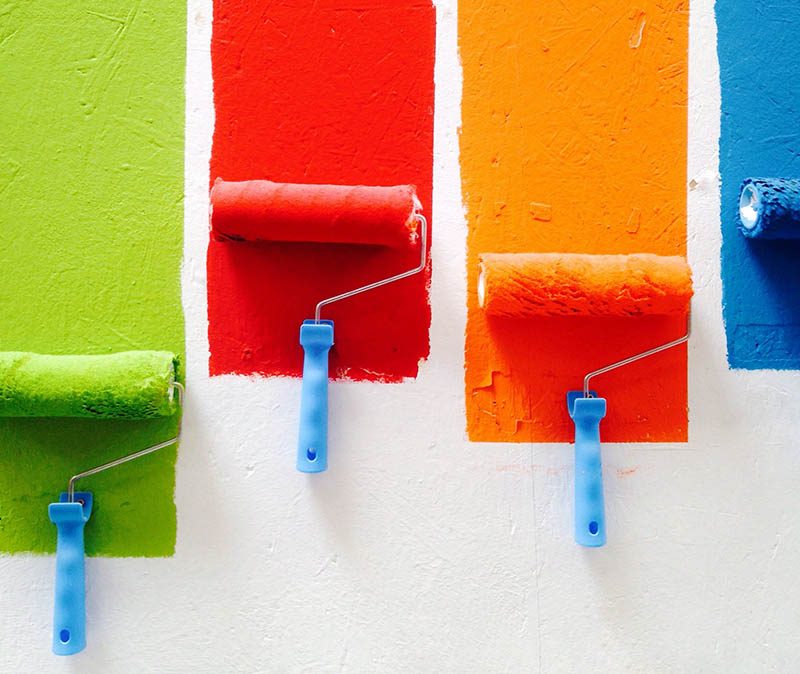
My friend grew up in a family of five girls, so life was busy for her parents. Meal times, clothes washing, mental load and just general stuff were all hectic. But her folks had a brilliant hack – they colour coded the kids.
Colour code your kids – ok not literally
The concept involves assigning each child a colour for their stuff.
The system is great for parents as a management tool. It helps you quickly identify what is absent, what is out of place and who has failed to pick up after themselves.
Blue towel on the floor – ok that’s Emily’s.
Green unwashed cup – must be Tom’s.
Yellow backpack missing from the go zone at the front door – aha, Sarah must have left hers in the car.
The more kids we have, the further our energy is stretched. And like all forms of organising, colour coding aims to preserve physical and mental energy so we aren’t too drained.
Colours are much more identifiable than name tags. When kids are in the throes of battle with siblings, calling them over to listen to each side and look for clues, is exhausting.
Instead, when you ask everyone to get their hats, there is no fighting over who gets what and who wore which one last. Grab your colour and we are out the door.
The colour coding system is empowering for kids as it helps them build a sense of responsibility, identity and independence. There is clear accountability between siblings and an egalitarian sense that they all get a fair go. If their colour is missing, it’s their problem.
Colour code your kids to minimise arguments and keep the peace.
Colour code your kids – examples
Towels. Often left lying around, so a good place to start.
Underwear, socks and pyjamas. Makes it easy to sort and put away for parents and kids.
Washing hampers. Another aid for sorting and putting away the washing. As you or the kids empty the clothesline or dryer you can quickly put clothes into the right piles. Red clothes into red hamper, green into green, etc. Then it’s easy to relocate the hampers into the right bedrooms.
Blankets and hoodies. They are often not put away. Name and shame.
Hair ties. Ditto. They end up everywhere. Colour-code for the win.
Toothbrushes. Nobody wants to mix these up, so it’s a no-brainer.
Lunchboxes and drink bottles. Ensures these items come out of their school bags. Also a good morning checkpoint if kids are making their own lunches. If there are empty lunchboxes on the bench at 8.30am you’ll know who to yell at.
Dishes. Snacking multiple times a day has been a real issue during lockdown. You’ll know who to blame when it’s only one colour scattered around the kitchen. And for any kid who needs to hear this, no you do not need a fresh plate every time you have a biscuit, or a fresh cup for every sip of water. Colour coding means the offender will naturally re-use their stuff rather than create a mountain of dishes. We hope.
Storage tubs. For toys, clothes and anything that has a distinct owner.
Devices and ear phones. May need a coloured Sharpie or nail polish to mark these.
Device chargers and cables. These cause a lot of problems in our house as they seemingly grow legs and walk. Cables often come in different colours but you can also buy white and mark with a Sharpie or nail polish at each end.
Calendar entries. It’s a fabulous planning technique to mark activities in the calendar with the colour of the kid in question. At a glance everyone knows who needs to be out of bed.
Colour code your kids – tips
- Choose basic colours that are easy to find in most items.
- Decide on an extra colour for spares or guest kids.
- Get Sharpies, nail polish, tape and even carabiners in your family colours as well, for items which only come in one shade.
For tips to help kids declutter, read here. To assist them to tidy what they already own, this post may be useful.
Read this post if your spawn have already progressed to the teen years.
If you need hands-on assistance, reach out and get in touch. I have kids myself, as well as a have a Working With Children check. Sometimes an impartial organiser and declutter coach is best for the sanity of everyone in the family.

